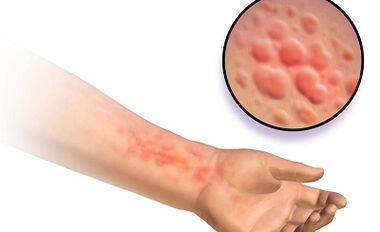Helminthiasis is a disease in which parasites develop in the human body.With a person's improper lifestyle, helminths develop in the genitourinary system.Despite the backdrop of parasites, various diseases may occur.
General information
The appearance of pathology in the urinosis cavity is diagnosed against the backdrop of the effects of echinococcus, filiraria, schistos.In most cases, infection with parasites is performed by fecal-oral route.
Helminants also fall into the body through water or food.In most cases, the disease occurs in people who consume unwashed vegetables and fruits.
Types of parasites in the human genitourinary system
Most parasites are damaged by the digestive system.But there are several types of helminthic invasions that penetrate the human genitourinary system and begin to parasitize it.
Enterobiosis

Enterobiosis belongs to the category of parasitic diseases that develop in the gastrointestinal tract.With premature treatment of the disease, parasites penetrate other organs, including the genitourinary system.
The appearance of pathology is diagnosed with the effects of worms.The length of the worm reaches 5 millimeters.
The parasites violated the integrity of the walls of the urinated cavity.With the prolonged course of the disease, patients are diagnosed with bleeding.Tips lead to the development of severe kidney disease.
With a long course of illness, cancer is observed in the genitourinary system.In most cases, a complication of pathology is urinary incontinence.
Filariotic
Filyariosis is a helminth that can reach 45 centimeters in length.Larva carriers are mosquitoes that transmit them during bites.
After that, active reproduction and parasitization of helminths in the genitourinary system are observed.The disease is characterized by the presence of several stages of development.
If the larva enters the human body, the lymph nodes blow it.Also, the pathological process is associated with a rash on the skin.
If you do not perform timely treatment of the disease, this will lead to an increase in lymph nodes in critical size and rest.
A very common complication of pathology is hiluria, which is associated with the combination of urine and lymph.After that, the accumulation of the lymph in the abdominal cavity is observed.In the final stage, diagnosing a ivory disease.
Worm removal is performed through the genitourinary system.With this disease, the patient is diagnosed with pain.In the urine, blood impurities appear.
Shistsomosis

A disease occurs when the worm worm is exposed, which parasites in the circulatory system.In length, the parasite can reach 20 centimeters.Every day is fertilization of up to three thousand eggs.The absorption of the larvae is performed through the walls of the urban cavity.
Parasites penetration is performed through poor quality water.One feature of helminths is that they penetrate the body even through microforens.
At the site of the lesion, the development of the inflammatory process is observed, which is associated with redness and itching of the skin.
When moving parasites through the genitourinary system in patients, the occurrence of general disease is diagnosed.Patients also complain of abdominal pain.
In the next stage, the disappearance of the signs of the disease is observed.If 6 months have passed after the infection, then a small amount of blood is diagnosed in the urine, which gradually increases.
With a parasite of a schista in patients, cystitis development, tumors in the genitourinary system, kidney inflammation and the appearance of stones in them can be observed.In women, damage to the genitals can be diagnosed with parasites.
echo
This disease develops by drinking unwashed vegetables and fruits.It also appears when eating raw meat and fish.The spread of parasites through the human body is performed through the blood.
During the pathology period, a person develops unpleasant symptoms.With pathology, people complain about the emergence of illness and weakness even when performing well -known issues.
Worms cause kidney pain.Patients also complain about the appearance of skin itching.
Symptoms of the disease
If the urinary tract is affected by the parasites, then this leads to the appearance of appropriate symptoms.In the early stages of the disease, severe itching is observed.
Patients may have redness and redness of the epithelial cover.Often, genitourinary parasites lead to an increase in lymph nodes.The bladder infection is not observed immediately after the poisons enter the human body.
The disease is associated in most cases with painful redness and itching on the skin.In the area of parasitic damage, the epidermis can be blown.
Patients complain of the appearance of unpleasant sensations during sexual intercourse.In the genitals, when the parasites penetrate, redness occurs.In women, the appearance of vaginal bleeding is diagnosed.
In the urine of the patients, blood impurities appear.The pathological process is associated with nerve disorders.During bladder emptying, pain in patients occurs.
Patients complain of the appearance of headaches or migraines during pathology.It is often accompanied by a variety of nerve disorders.Patients complain of constant fatigue and sleep instability.
With pathology, patients decrease in appetite, which leads to rapid weight loss.The disease is associated with diarrhea, which can be replaced with constipation.Very often, after penetration of parasites into the body, patients observe an increase in body temperature.
With parasites in the human genitourinary system, there is the development of appropriate symptoms, which requires urgent contacts from the doctor.
Treatment
Pathological therapy begins with the diagnosis.For this purpose, instrumental and laboratory methods are used.Diagnosis is made after 1.5 months after evaluated infection.
Predetermined immunological tests, which determine antibodies to worms.
The choice of the pathological process treatment method depends directly on the type of worms that was provoked.With cystostomosis, the disease only cures in stationary conditions.
In this case, medication therapy is used.Patients are recommended for treatment with special anthelmintic medication.
To ensure complete treatment of helminthic occupation, the patient is recommended to undergo some treatment courses.
To improve impaired body performance, pathogenic and symptomatic treatment is recommended.
If the patient is infected second, then therapy is performed using antibacterial medicines that belong to the tetracycline row.To increase the therapeutic effect, the use of antihistamines is recommended.
If the patient has a symptom of philariosis, then he should be hospitalized.To reduce lymphostasis, a swollen limb is fixed in an elevated position.At the same time, the use of compression freedom is recommended.
In difficult cases, the treatment of the disease is performed surgically.To eliminate a parasitic infection, it is recommended to use an antiParasitic drug.
If the patient has an allergic reaction to the medicine, then the simultaneous use of antihistamines is recommended.
Parasites in the genitourinary system develop in extremely rare cases.But they are quite dangerous.This is why, in the event of the first symptoms of helminthic occupation, the patient must undergo appropriate examinations.
Only after determining the type of pathogen will the patient be prescribed in accordance with his individual characteristics and the severity of the pathology.






































